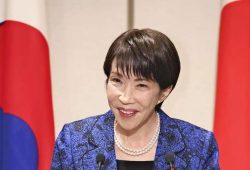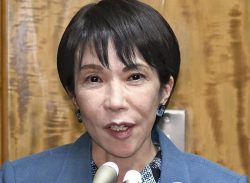- Yomiuri Editorial
- BOJ policy modification
Market realities prompted decision to allow more fluctuation in bond yields
12:20 JST, December 21, 2022
The Bank of Japan has decided to modify its monetary easing policy. The unexpected move to widen the fluctuation range of long-term interest rates surprised the financial markets. The central bank should thoroughly explain the aim and effect of the policy modification.
The central bank has set a target of guiding long-term interest rates to around 0% in its monetary policy and until now had allowed them to fluctuate in a range of around plus or minus 0.25%.
This time, the central bank allowed long-term interest rates to rise by expanding the fluctuation range to around plus or minus 0.5%. This is perceived by financial markets as an effective interest rate hike. The BOJ kept the short-term interest rate at minus 0.1%.
Rapidly rising inflation has prompted central banks in Western and other nations to raise interest rates. In Japan as well, soaring prices are a cause of concern for the economy.
Even as economic conditions have changed drastically since the beginning of this year, the Bank of Japan had continued to refuse to alter its monetary easing policy.
It is noteworthy if the central bank has changed its rigid stance and is taking steps to modify its policy flexibly.
The BOJ explained that the decision this time was not to tighten monetary policy, but only to normalize the functioning of the government bond market.
As the central bank continues its massive purchases of government bonds at high prices in an attempt to keep long-term interest rates low, there are days in the market when no trades are made by participants other than the BOJ.
It is said that such a situation could adversely affect the issuance of corporate bonds and other rates based on the yield of Japanese government bonds. The policy modification is likely based on market realities.
Even though long-term interest rates will continue to be guided low, widening the range of fluctuation will make it easier for trades to be profitable, which can be expected to lead to an expansion in transactions, the central bank said.
Bank of Japan Gov. Haruhiko Kuroda emphasized, “The effect of monetary easing will spread more smoothly with this policy modification.”
Even if there is no intention to tighten monetary policy, the central bank’s decision will however result in pushing up long-term interest rates. On Dec. 20, the rate temporarily hit an about 7½-year high of 0.460%. Many interest rates, including those on mortgages and corporate loans, could rise in the future.
The central bank needs to thoroughly analyze the impact on companies and households.
In addition, the policy modification around this time of the year came as a surprise to markets. Following the announcement, the Nikkei Stock Average briefly slumped more than 800 points on the Tokyo Stock Exchange.
Central banks in Western nations generally attach importance to “dialogue with markets,” signaling policy changes in advance, to prevent turmoil in financial markets.
That dialogue is said to remain as a major challenge for the BOJ. The central bank should give sufficient consideration to how information should be properly disseminated.
(From The Yomiuri Shimbun, Dec. 21, 2022)
"Editorial & Columns" POPULAR ARTICLE
-

Artificial Intelligence Expands Possibilities for Foreign Language Learners
-

Build Intellectual, Physical Strength, As Well As Communicative Power / Japan Should Move from Beneficiary to Shaper of World Order
-

Global Economy in Turmoil: Prevent Free Trade System from Going Adrift / Risks to Financial Markets Must Be Heeded
-

Japan-China Strain Set to Persist as Beijing Officials Self-Interestedly Bash Tokyo; Takaichi Unlikely to Back Down
-

Elderly People Living Alone: What Should be Done to Ensure Living with Peace of Mind until the End?
JN ACCESS RANKING
-

BOJ Gov. Ueda: Highly Likely Mechanism for Rising Wages, Prices Will Be Maintained
-

Core Inflation in Tokyo Slows in December but Stays above BOJ Target
-

Osaka-Kansai Expo’s Economic Impact Estimated at ¥3.6 Trillion, Takes Actual Visitor Numbers into Account
-

Japan Govt Adopts Measures to Curb Mega Solar Power Plant Projects Amid Environmental Concerns
-

Japan, U.S. Start Talks on Tokyo’s $550 Bil. Investment in U.S.; Energy, AI Projects Were Focus of 1st Meeting
























